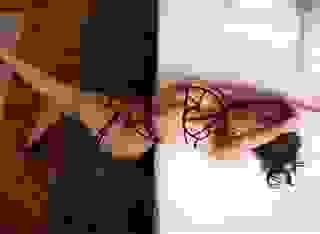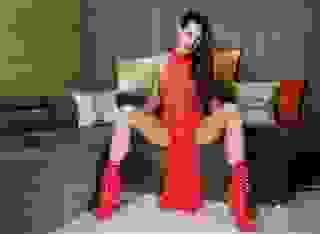- How To
- Not Seventeen (English Language Haiku)
Note: You can change font size, font face, and turn on dark mode by clicking the "A" icon tab in the Story Info Box.
You can temporarily switch back to a Classic Literotica® experience during our ongoing public Beta testing. Please consider leaving feedback on issues you experience or suggest improvements.
Click hereSeventeen . . . seventeen . . . seventeen: the words echo in the halls striking fear in the hearts of haiku students and sensei alike. Poets are assailed by well meaning fans and critics chanting the haiku mantra: "five-seven-five". With every poem, haiku poets are presented with the opportunity (or cursed with the responsibility) to explain their art form. Of the many conceptions and misconceptions about haiku, the one most often discussed is the syllable count.
Webster's New Collegiate Dictionary (1980), defines haiku as: "an unrhymed Japanese verse form of 3 lines containing 5,7, and 5 syllables respectively." Wow, that is like trying to use a tiny bonsai as an example of a giant redwood tree. It took R.H. Blyth four volumes to describe haiku and two more to discuss its history. I will touch briefly on two elements outlined in the Webster definition: the syllable count and the amount of lines in haiku.
Jack Kerouac, who helped popularize haiku in America with his book The Dharma Bums (1958), provided a much different definition outlining the vast differences in Western Language and Japanese. In Scattered Poems (1970), a posthumous collection of Kerouac's poems, he stated: "A 'Western Haiku' need not concern itself with seventeen syllables since Western Languages cannot adapt themselves to the fluid syllabillic Japanese. I propose that the 'Western Haiku' simply say a lot in three short lines in any Western Language." While this approach to haiku may not address all the elements of haiku, Kerouac's haiku are widely anthologized in haiku collections.
A big fat flake
of snow
Falling all alone
(Jack Kerouac)
In Haiku in English (1967) Harold G. Henderson states: "As a general rule a classical Japanese haiku: 1. consists of 17 Japanese syllables (5-7-5) 2. contains at least some reference to nature (other than human nature) 3. refers to a particular event (i.e., not a generalization) 4. presents that event as happening now- not in the past." He continues: "Japanese haiku 'syllables' used for the 5-7-5 count are not English syllables. They are rather units of duration." The vast difference between the Japanese and English languages creates the confusion regarding the haiku 'syllables'. While English words are broken into syllables, the Japanese words are broken into onji (sound-symbols). Japanese onji are much shorter than English syllables (i.e. the single syllable English word "ran" breaks down into 2 Japanese onji, and the word "rain" breaks into 3 onji). Cor van den Heuvel, in the preface to The haiku Anthology, Expanded Edition (1999), details how this difference affects English Language haiku: "It is now known that about 12 - not 17 - syllables in English are equivalent in length to the 17 onji (sound- symbols) of the Japanese haiku."
The comparison of English syllables to Japanese onji is not exact, in fact, Cor van den Heuvel describes haiku as: "... a short poem recording the essence of a moment keenly perceived in which nature is linked to human nature. A haiku can be anywhere from a few to 17 syllables, rarely more." And what dictates how many syllables you use? Simply the nature and language of your poem. In a poem about his brother, who was killed in The Vietnam War, Nicholas Virgilio wrote:
Lily:
out of the water . . .
out of itself.
(Nicholas Virgilio)
He used eleven syllables in this beautiful haiku, which won a first place in the American Haiku and Japan Air Lines haiku contest in 1963 (out of over 41,000 English Language haiku submitted). Another haiku: "In a Station of the Metro" by Ezra Pound, considered by some to be the best English Language haiku ever written, diverts from 17 syllables:
The apparition of these faces in the crowd;
Petals on a wet, black bough.
(Ezra Pound)
Nineteen syllables! But, also notice that there are only two lines in this haiku. Many Japanese haiku were written as one-line poems (written vertically). These poems when typeset horizontally are sometimes presented in the one-line form, other times they are presented in a three-line form. Generally, while the three-line form is the most widely selected, one-line, two-line and even four-line forms are acceptable, provided the language and content of the poem support the line breaks. Another example of a successful departure from a three line haiku is Takayangi Shigenobu's haiku, which is basically a concrete haiku:
in a mountain range's
creases
hear
ing
clear
ly
the
bur
ied
ear
s
(Takayangi Shigenobu)
Considering the language differences between Japanese and English, Webster's definition of haiku is incomplete at best. English Language haiku often diverges greatly from the syllable and line form described in the dictionary. In 1987, Cor van den Heuvel wrote in The New York Times Book Review: "A haiku is not just a pretty picture in three lines of 5-7-5 syllables each. In fact, most haiku in English are not written in 5-7-5 syllables at all--many are not even written in three lines. What distinguishes a haiku is concision, perception and awareness--not a set number of syllables."
Seventeen . . . seventeen . . . seventeen: the words fade into the distance. As outlined above, haiku is more than syllable and line counts, much more. Seasonal content (kigo), cutting words (kireji), and "nowness" are other very important elements of haiku. They will be discussed is future articles, in the meantime I close with perhaps the most famous, and most widely translated haiku:
the old pond
a frog jumps in
the sound of water
Matsuo Basho (1686)
-
Bibliography:
1. Blyth, R.H., Haiku Volume 1 Eastern Culture The Hokuseido Press, Tokyo, Japan 1949.
2. Henderson, Harold G., An Introduction to Haiku Doubleday Anchor Books, Garden City, New York 1959.
3. Henderson, Harold G., Haiku in English Charles E. Tuttle Co. Publishers, Tokyo, Japan 1967.
4. Higginson, William J., The Haiku Handbook Kodansha International Ltd., Tokyo, Japan 1985.
5. Kerouac, Jack, Scattered Poems City Lights Books, San Francisco, CA. 1970.
6. Kerouac, Jack, The Dharma Bums the Penguin Group, New York, New York, 1976. (First published by The Viking Press, 1958.)
7. van den Heuvel, Cor, The haiku Anthology Expanded Edition W.W. Norton & Company, New York, New York 1999
- COMMENTS
You have done a good job showing how English-langauge haiku differs from Japanese-language haiku.
Of course, Japanese haiku has not been immune to innovation. Since Shiki (1867-1902) 'modernized' haiku (formerly 'hokku'), a number of Japanese haiku poets have broken some or all of the 'traditional' rules of composition. Even the 'big three' of classical haiku -- Basho, Buson and Issa -- occasionally wrote haiku with fewer or more than the traditional 17 Japanese 'onji'.
For those interested in learning more about Kerouac's haiku, I recommend "Jack Kerouac: Book of Haikus", ed. by Regina Weinreich (Penguin Books, 2003).
And for an overview of the history of haiku in English, I recommend "Haiku in English: The First Hundred Years",ed. by Kacian, Rowland, and Burns (W W. Norton & Co., 2013).








